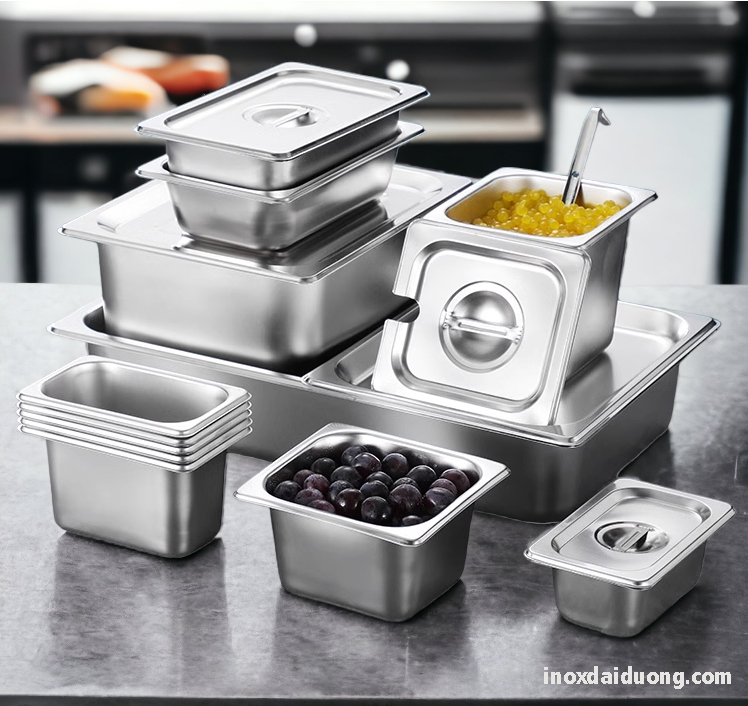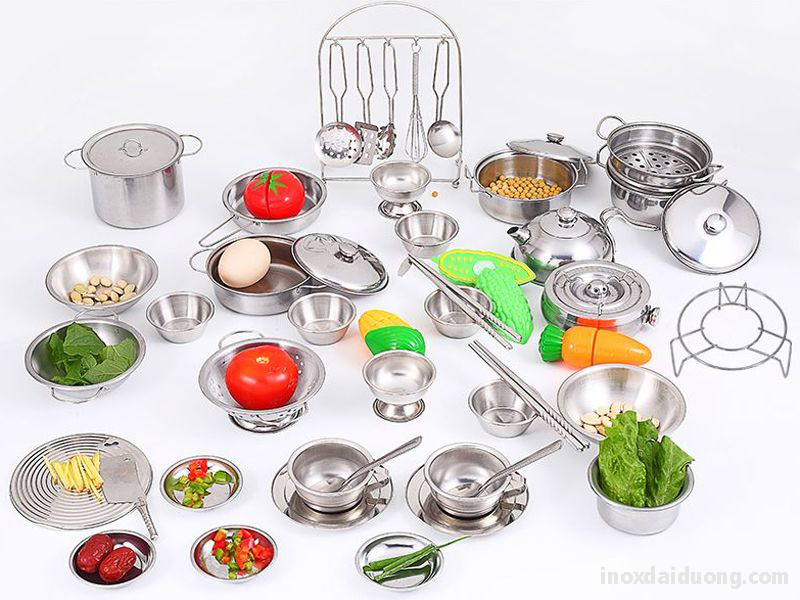Why Stainless Steel is Ideal for Kitchens and the Cornerstone of the Food Service Industry ?
From its earliest days, stainless steel has been recognized for its potential to enhance food preparation by making it safer and easier. Whether in high-end consumer items or the largest commercial kitchens, stainless steel surfaces, equipment, utensils, and more form the foundation of the modern food service environment.
In this article, we’ll explore why stainless steel is an excellent choice for food service, how it is commonly used, the popular types of stainless steel in today’s kitchens, and best practices for ensuring your stainless steel equipment and utensils are safe and long-lasting.
Nội dung chính
Benefits of Stainless Steel in the Food Industry
Food preparation environments benefit from many of the same properties of stainless steel as other industries.
Stainless steel’s superior corrosion resistance means kitchens don’t have to worry about damage from spills, steam, food products, and the mess that comes with fast, high-volume cooking.
This resistance to acids and alkalis also offers advantages beyond the kitchen.
Stainless steel cookware is extremely neutral, so it won’t interact with food and alter the taste, appearance, or odor of ingredients like aluminum or cast iron can. This results in cleaner, more appealing flavors and happier diners.
Additionally, most stainless steel components have a wide range of heat resistance. Stainless steel pots, pans, and containers can be moved from the freezer to the kitchen and everywhere in between without worrying about damage.
At the end of a busy shift, stainless steel is also easy to clean. Kitchen staff can wet mop, pressure wash, or steam clean stainless steel surfaces to quickly and thoroughly sanitize busy kitchen environments.
For more stubborn areas, stainless steel’s passive coating makes cleaning up spills and splatters as simple as grabbing a soft cloth.
More importantly, stainless steel can withstand years of regular cleaning and maintenance while still looking as good as when you first bought it.
Stainless steel’s corrosion resistance also prevents bacteria from growing or harboring other harmful pathogens. While softer plastics and metals can easily scratch or groove, the smooth surface of stainless steel leaves no place for microorganisms to hide.
When hygiene isn’t the top priority, various finishes allow you to customize the appearance of stainless steel to match your preferred presentation. Standard finishes include mirror or polished stainless steel, brushed stainless steel, hammered or dimpled stainless steel, and etched stainless steel.
Ultimately, stainless steel offers a great balance of strength, weight, and temperature resistance. It is not as light as aluminum, but it is much stronger, lighter than cast iron, and there are no concerns about interaction with food components.
The Most Common Types of Stainless Steel in the Food Industry
While there are various types of stainless steel used in food-related applications, three types are the most common:
304/304L (also known as 18/8 or 18/10):
This is the most prevalent type of stainless steel in restaurants, commercial kitchens, and food service environments due to its balance of cost and performance. Its higher nickel content gives it a high-gloss finish, which looks attractive to customers and diners. Additionally, it is durable and affordable, which is appreciated by kitchen staff and business owners.
Common items made from 304/304L stainless steel include hollowware (jugs, sauce pots, gravy boats), cookware, sinks, cookers, refrigerators, storage tanks, plumbing, and other contact equipment.
430:
This type of stainless steel typically has a flatter, more matte appearance and is used for items that do not require a mirror finish or high reflectivity but must have the durability and ease of cleaning associated with stainless steel.
Common items made from 430 stainless steel include strainers, screens, covers, panels, worktops, kitchenware, and low-cost sinks.
316/316L:
This type of stainless steel offers excellent corrosion resistance and strength. However, its higher cost means it is generally used in special situations involving highly acidic or salty foods and solutions.
Other stainless steels used include 201 and 420 grades for flatware and smaller hollowware, which are often high-turnover items.
Knife makers and chefs also prefer 1.4021 and 1.4116 stainless steel (sometimes referred to as German stainless steel) for knife blades because these grades hold a sharp edge better and can withstand the rigors of a fast-paced kitchen environment.
How to Care for Stainless Steel
Caring for stainless steel kitchen appliances is usually straightforward. Use a mild detergent, warm water, and a soft cloth for regular cleaning. Most stainless steel can also withstand pressure washing, steam cleaning, and stronger cleaners.
Avoid using abrasive surfaces like wire brushes or steel wool, as these can damage the passivation layer on the steel and create scratches where microorganisms can grow.
Electropolishing is a great way to make stainless steel easier to clean. If your stainless steel appliances have lost their resistance after long periods of use, a passivation treatment can restore them to like-new condition.
For more cleaning tips, check out our guide on the importance of stainless steel maintenance.
Stainless steel’s excellent corrosion resistance, high strength, wide temperature tolerance, and light weight make it ideal for today’s busy and confined food service environments.
It’s easy to clean, interacts minimally with food components, and offers customizable finishes, making it popular in both front and back-of-house settings.
Choosing different grades of stainless steel offers greater flexibility in cost and appearance, allowing restaurants and kitchens to optimize performance and price.
Following basic maintenance procedures can significantly extend the life of stainless steel kitchen components. Consulting regulations is essential to ensure compliance with all safety and hygiene requirements.
Dai Duong is a leading supplier of stainless steel materials in Vietnam and overseas markets. With extensive experience serving various industries, our team of sales analysts can help you find the ideal solution for your project. Call Ocean today to discuss how stainless steel products can help you achieve your goals on your next project.




CÔNG TY CỔ PHẦN QUỐC TẾ ĐẠI DƯƠNG O S S
Inox Đại Dương cam kết cung cấp vật tư inox đạt chuẩn – đúng nguồn gốc – đúng chất lượng, giúp doanh nghiệp yên tâm sản xuất và nâng cao uy tín thương hiệu.
Nếu bạn cần hỗ trợ về sản phẩm hoặc báo giá nhanh, vui lòng liên hệ với chúng tôi qua thông tin dưới đây:
Xem chính sách nội dung